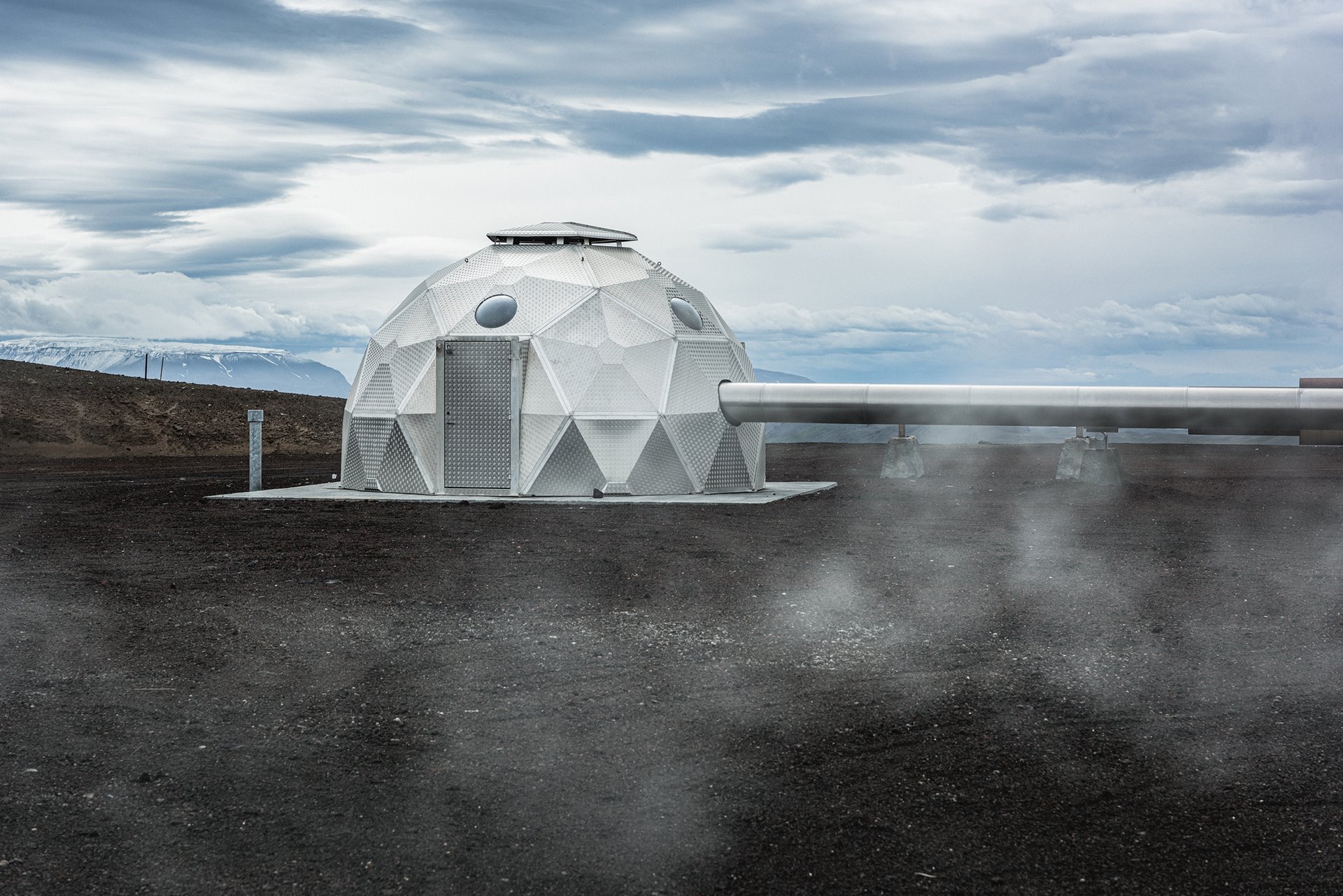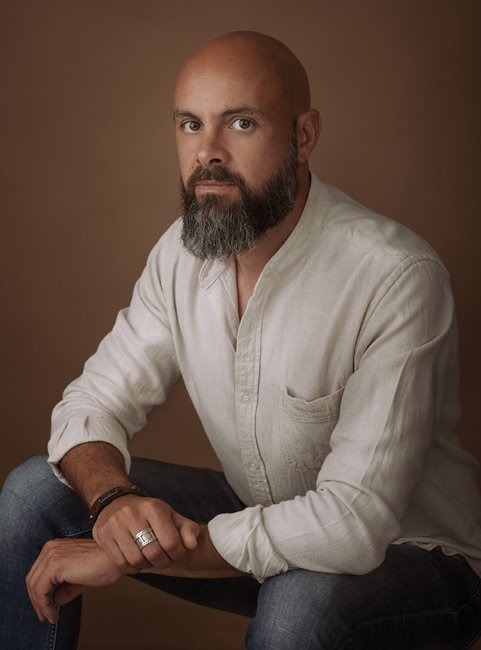A geodesic dome covers the injection well of a geothermal power plant, in Hellisheiði, Iceland.
The plant captures geothermal energy from the volcanic Hengill mountain. Geothermal power plants draw fluids from underground reservoirs to the surface to produce steam, which then drives turbines to generate electricity. The process is not emissions-free, as the remaining fluids contain harmful condensates, but the plant injects these back into deep bedrock, where the CO2 can turn rapidly into minerals. The dome covers the borehole and equipment, reducing the visual impact on the environment. By January 2022, this plant had fixed over 100,000 tonnes of CO2 in this way. In cases where carbon emissions cannot be avoided, such carbon fixing can be a valid alternative, although critics say that carbon-capturing technologies detract from the more pressing need to reduce carbon emissions in the first place.
This project documents different technologies that offer possible routes of transition to a net-zero economy. The photographer visited innovative facilities across Europe, from Iceland to Italy, from 2020 to 2022.
Human-induced climate change is the largest, most pervasive threat to the natural environment and society that the world has ever experienced, according to the UN Human Rights Office, OHCHR. This prompted the European Union to establish targets to cut greenhouse emissions by at least 55 percent by 2030 and to reduce them to net-zero by 2050. European companies seeking ways to achieve these goals are exploring renewable energies, new technologies for food production, and the circular economy as potential ways forward.
Are you a photographer and/or passionate about press freedom? Sign up for our newsletter to stay updated on our annual contest and to hear about exhibitions near you.

